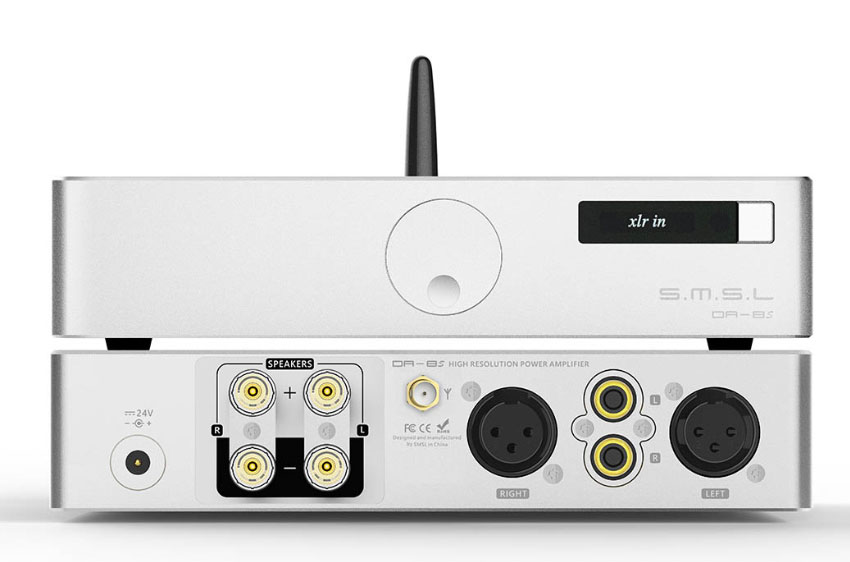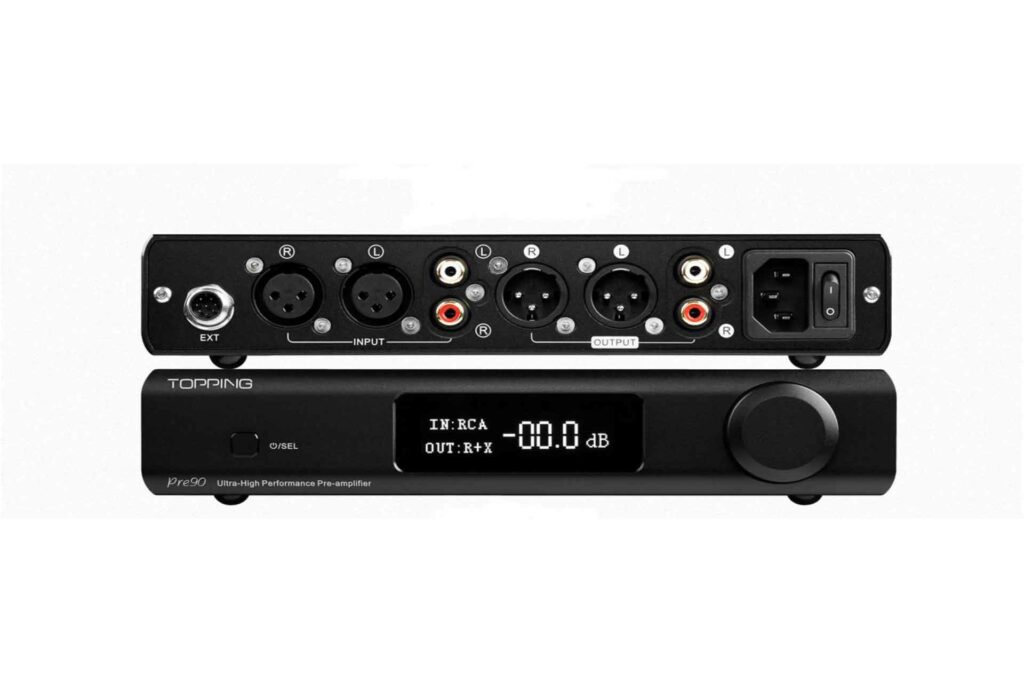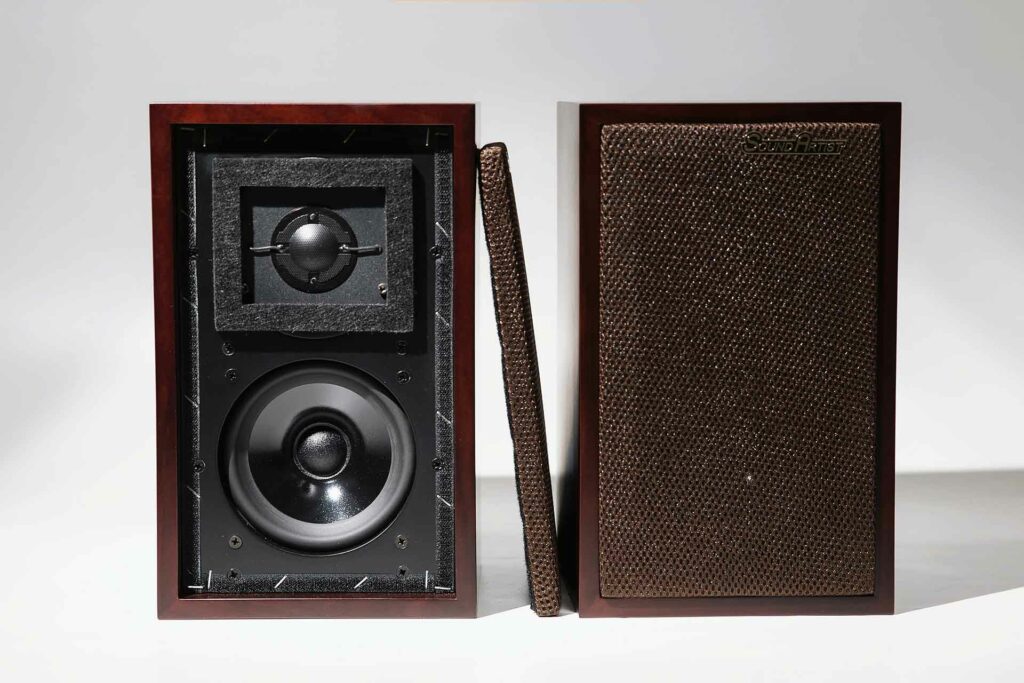Recently, I’ve been asking audiophile industry executives what they think of Chi-Fi or “Chinese Hi-Fi (aka: audiophile components made in China, sold directly to clients all over the world at often hard-to-conceive-of prices). It has been notable how many were not aware of the phenomenon. The concept of Chi-Fi is changing the audiophile game right in front of our eyes. The first review that will ever be published on FutureAudiophile.com is a $169 Internet-direct 80-watt Class-D amp from a company called S.M.S.L that is absolutely gorgeous, includes an IR remote, and retails for a mere $169. To quote Kyle Broflovski’s mom, Sheila, from South Park… WHA-WHA-WHA-WHAAAAA?

Who Are These That Brands That Make Up Chi-Fi?
Chi-Fi brands are pretty far from household audiophile brand names. In fact, most of them I’ve never heard of despite more than a generation of experience in the consumer electronics business. S.M.S.L., Topping, SoundArtist, Dared, Fosi Audio, Gustard, and nearly countless others. But that’s actually part of the appeal of Chi-Fi. These brands obviously aren’t being marketed in the west, so if you know about them, you’re almost in a secret club. You might be inclined to lump Monoprice.com into this category, since they’re selling a lot of Chinese goods to the west at incredible prices—indeed, many of them likely manufactured by the same companies in the same factories—but since Monoprice is a known entity in our part of the world and has a good marketing machine, it’s not quite the same.

I am not sure “Chi-Fi” is the wokest way to describe this category, as some could claim that the term is a little “off-color.” But let’s not lose focus on the big picture here. These brands are overseas providers of very high value audiophile components that are selling in ways never seen before in the hobby. Let’s not bring culture wars into our audiophile value conversation, cool? In fact, if it makes you feel any better, most of the Chinese manufactures at the heart of this phenomenon embrace the term, since it runs counter to the “cheap Chinese crap” derision that has persisted in our hobby for decades.
What Is the Downside to Buying Chi-Fi?
These companies deliver on value. They also often deliver on performance too. Where they come up a little light is in the world of support. Do you need a dealer to help come set up your gear? Get prepared to pay them their full hourly rate to help you if you go the Chi-Fi route. Do you need rock-solid customer service in English, be it on the phone or email, or even chat? Some Chi-Fi companies can’t deliver on any of the above, which could be frustrating.
Some audio enthusiasts buy their Chi-Fi through retailers like Apos Audio and other more mainstream consumer electronics online vendors like Alibaba.com. There are plenty of options, including the almighty Amazon, who sell today’s best Chi-Fi products in ways that don’t require a Crypto wallet and avoid a retail experience that resembles buying black tar heroin off of the dark web. Simply put: anybody can buy Chi-Fi products pretty easily and without much fear of an issue.
Longevity has been a topic discussed among long-time audiophiles and, respectfully, many of these products haven’t been in the wild long enough to know how they perform over time. The question is: how much do you care if your four-year-old $200 integrated amp craps out? That $50 per year of performance. The bigger question is: where you can responsibly recycle said gear and move on? And what is the ethical cost of buying such disposable gear, assuming it does crap out right around the time you’d expect it to at these prices?

When it comes to English-based websites, it’s time to re-calibrate your expectations if you are dipping into the world of Chi-Fi. Some of the sites linked above lack an SSL security certificate (good luck with your rankings on Google these days without one). Others are written in very vague, hard-to-understand English (think: Google Translate after a few strong Macallan 12s). Other Chi-Fi websites aren’t written in English at all – not a word..
What Is Going On with the Chi-Fi Enthusiast Community?
There are a number of Reddit.com threads and Subreddits, as well as a few Facebook groups that track all of the reviews and goings-on in the space. When you dig into those communities, you find a very exciting trend, in that they are filled with young, enthusiastic people who are having a blast geeking-out on audio gear that they can afford. They are collecting different varieties of headphones. They can dabble in “flea watt” tube amps for very-easy-to-drive speakers for a side system. They are learning that expensive DACs often don’t offer much more (unless profit margin counts) than much less expensive alternatives.
One specific product category that is getting a lot of attention in the Chi-Fi realm is IEMs (in-ear monitor) and headphones. The volume of companies offering such products is staggering, but that might not be the most impressive part of the value proposition. What consumers are finding out is: a $49 Chi-Fi IEM doesn’t suck. In fact, it’s probably as good as if not better than an IEM that’s sold by an American brand for many times more. Many are comfortable. Some measure really well when tested. The consumer effect is that more and more people are willing to take chances on new products and product categories, thus getting more and more into the hobby. There is nothing wrong with that, friends. Nothing.
Who Is the Winner of The Chi-Fi Phenomenon?
Everybody is the winner if the goal is to grow and promote the audiophile hobby to a younger, more tech-savvy audience. The people buying the gear are getting very no-frills audiophile products at a great price. The companies are able to bypass traditional retail distribution to allow them to make a fair profit margin while delivering very low-cost gear to their customers. Traditional retailers in the audiophile space are not the most welcoming of anything new in the hobby, but what some of them don’t see is that if an enthusiast gets their feet wet with a Topping system for two-channel electronics, that they might be in their store a few years later asking them about say Anthemor Parasound or who knows what? Change hurts for many audiophile traditionalists, but change is needed for the hobby to thrive in the future.
The mission statement of FutureAudiophile.com speaks about audiophile value and we are dedicated to that. Every time we open up the legacy, audiophile print magazines, we read about $10,000 to $100,000 components that are more and more esoteric and more and more volatile in terms of value. If you’ve got a Power Ball winner budget, that is Kool and The Gang with us. For the rest of us who want to enjoy the hell out of our music without having to sell a kidney, orthose of us who want to help others get involved in the hobby, the concept of Chi-Fi is simply wonderful. Yes, you have to endure a few bumps along the way, but at these prices, a rocky road is to be expected. Often, with the value and performance of some of these products, you might just be blown away.




You’re spot on Jerry! I have two “chi-fi” dacs in my system a SMSL SU 9N and a Denafrips Ares II with 12th anniversary software. I love these two pieces of gear and they didn’t cost me an arm and a leg to purchase.
Excellent.
I am doing a story that should stir the pot a little in the future about higher end DACs as some thing that entry level is all you need. For many that is the case as the stuff you describe are KILLER audiophile values. I know people in the pro audio world who use digital like you do. There is a little more than goes into the higher end and for those who can afford it, there can be sonic benefits.
Thanks again for posting and enjoy your growing (and killer) system!
Jerry